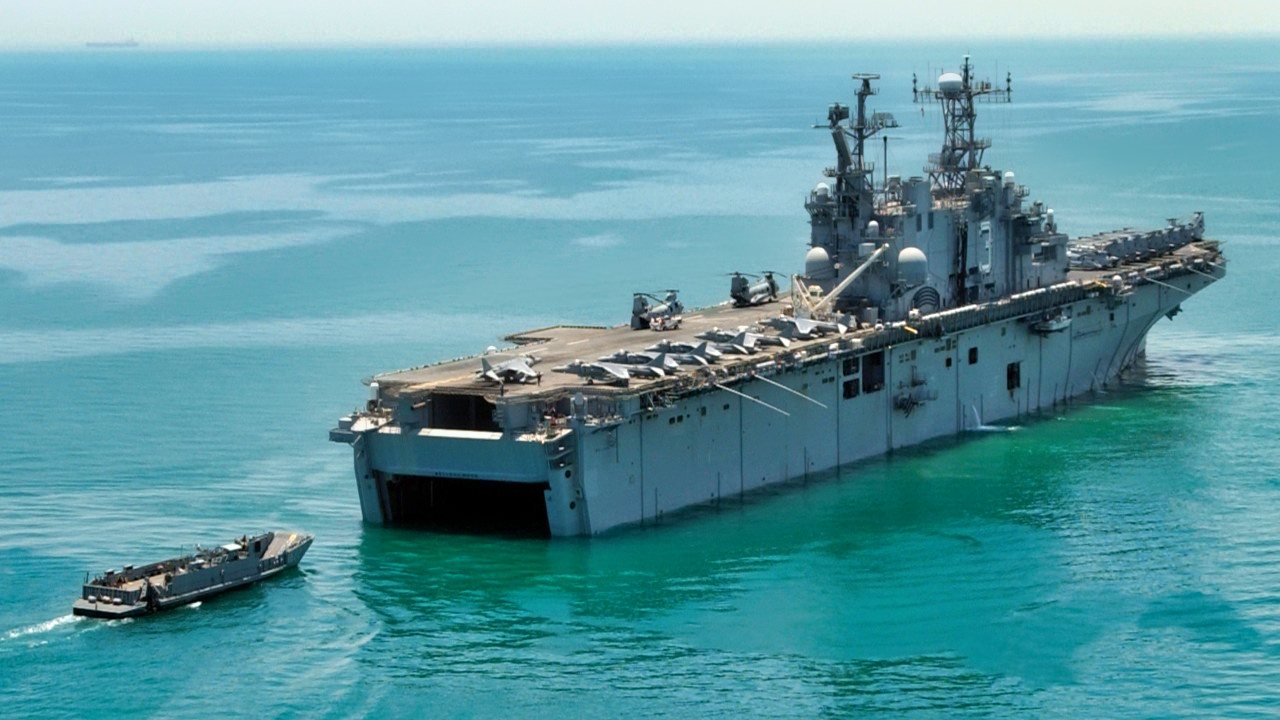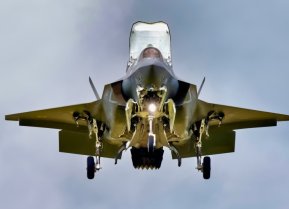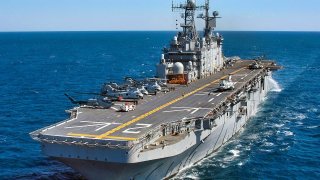Tarawa-Class Amphibious Assault Ships: The Original Mini Aircraft Carrier?
While the Tarawa-class amphibious assault ships introduced to service with the Navy during this time have been decommissioned over the last decade, their legacy has been emulated by subsequent warships.
As the Cold War was heightening in the 1970s, the arms race between the USSR and the U.S. was on. Both nations worked to develop cutting-edge military systems, resulting in a range of innovative technologies that remain in service today. While the Tarawa-class amphibious assault ships introduced to service with the Navy during this time have been decommissioned over the last decade, their legacy has been emulated by subsequent warships.
Amphibious assault ships derived from the design of aircraft carriers converted for use as helicopter carriers. These ships are required to be capable of sailing into combat and partaking in humanitarian/other contingency missions on very short notice. Landing Helicopter Assault (LHA) assault ships are the largest type of amphibious ships. Capable of Vertical/Short Take-Off and Landing, Short Rake-Off Vertical Landing, Vertical Take-Off and Landing tilt-rotor and other operations, these assault ships are essentially mini carriers.
The history of the Tarawa-Class ships:
Manufacturer Ingalls Shipbuilding constructed the five Tarawa-class LHA assault ships between 1971-1980. An additional four ships were also planned for this class, however, they were ultimately canceled and merged with the Wasp-class amphibious assault ships.
The lead ship of the class, USS Tarawa (LHA-1) entered service with the Navy in the mid-1970’s, becoming the second naval ship to be named after the World War II Battle of Tarawa. Like her sister ships, Tarawa was designed to carry out the mission sets previously performed by multiple vessels. She served as the amphibious assault ship, the amphibious transport dock, the amphibious cargo ship and the dock landing ship.
Subsequent Tarawa-class ships include the USS Saipan (LHA-2), USS Belleau Wood (LHA-3), USS Nassau (LHA-4) and USS Peleliu (LHA-5). When the Tarawa-class was canceled, the Navy repeated its design for the Wasp-class amphibious assault ships with several alterations.
Each Tarawa-class vessel was powered by a pair of Combustion Engineering boilers, connected to two Westinghouse turbines, which supplied 70,000 horsepower to the assault ships. This speed enables the class to sail at top speeds of 24 knots with a maximum range of 10,000 nautical miles.
In terms of armament, the Tarawa-class really packed a punch. Initially, the Navy’s amphibious ships featured three MK 45 lightweight guns, 2 Mark 25 Sea Sparrow missile systems and countermeasures including Mark 36 SRBOC launchers, a Sea Gnat Unit and a SLQ-25 Nixie towed torpedo decoy.
By the late 1990s, these assault ships were equipped with a Mark 49 RAM surface-to-air missile system, six Mark 242 25mm automatic cannons, and a pair of Vulcan Phalanx close-in weapon systems.
Operational history:
During their time in service, the Tarawa ships participated in Operation Enduring Freedom, Operation Iraqi Freedom, and provided humanitarian support after the catastrophic Tsunami in 2004.
As detailed by Military.com, “During Operation Iraqi Freedom, two LHDs served as “Harrier carriers,” launching an air group of AV-8B attack aircraft against targets inside Iraq. In 2004, LHAs and LHDs were used to transport thousands of Marines and their equipment to Iraq and Afghanistan for combat operations.”

Four Tarawa-class amphibious assault ships were decommissioned by 2011. The final vessel in service, USS Peleliu, was decommissioned in 2015.
About the Author: Maya Carlin
Maya Carlin, National Security Writer with The National Interest, is an analyst with the Center for Security Policy and a former Anna Sobol Levy Fellow at IDC Herzliya in Israel. She has by-lines in many publications, including The National Interest, Jerusalem Post, and Times of Israel. You can follow her on Twitter: @MayaCarlin.
Image Credit: Creative Commons.


